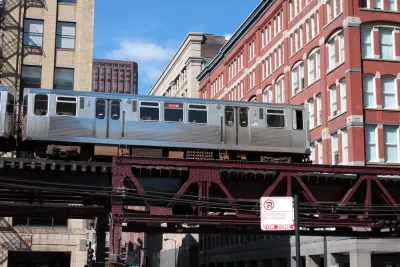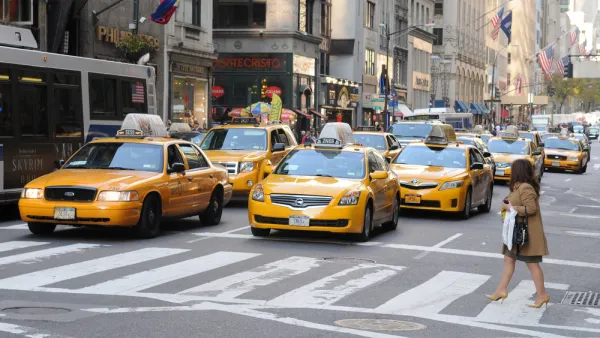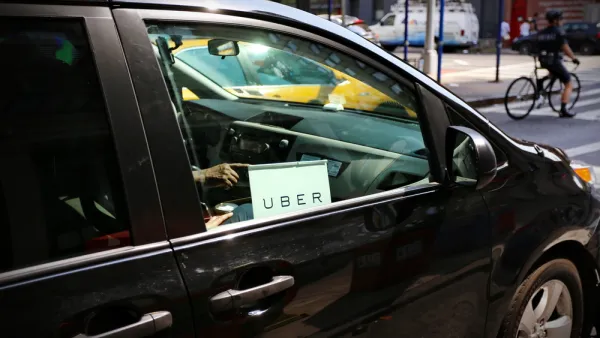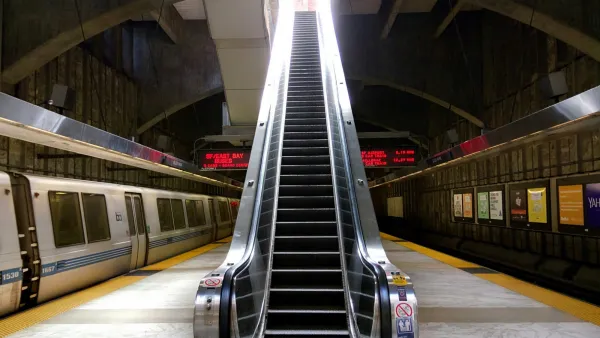Many of the places in Chicago generating the most ride-hailing trips with services like Uber and Lyft are accessible by transit, according to new research.

Oriol Marquet, a researcher from the University of Barcelona, has published new research on the effect of land use at trip origin and destination on demand for ride-hailing services like Uber and Lyft.
The paper, titled "Spatial distribution of ride-hailing trip demand and its association with walkability and neighborhood characteristics" and published recently by the journal Cities, examined records of 32 million ride-hailing trips in the city of Chicago to identify how land use determines the use of ride-hailing services.
According to a Tweet posted by Marquet, the paper identifies "worrisome trends," namely, that "61% of ride-hailing trips are between highly walkable areas," and areas that offer more sustainable forms of travel. As put in the paper's abstract, "Ride-hailing is predominantly being used to travel between highly accessible areas which should be accessed using more sustainable transport modes."
The paper adds a land use angle to previous research that found evidence that many ride-hailing trips are being made at the expense of transit trips, as first revealed by a study performed by Regina Clewlow in October 2017, and contributing to a decline in transit use in urban areas.
According to another Tweet by Marquet, "Ride hailing does not seem to be a viable alternative for low-income households or for those with no car access. This suggests that even at the currently heavily-subsidized low prices, Uber and Lyft cannot substitute for public transit in low-income areas." The trip data was generated between November 1, 2018 to June 28, 2019, so the research comes with the caveat that the data and findings reflect mode choices and trip generation in the time before coronavirus.

Analysis: Cybertruck Fatality Rate Far Exceeds That of Ford Pinto
The Tesla Cybertruck was recalled seven times last year.

National Parks Layoffs Will Cause Communities to Lose Billions
Thousands of essential park workers were laid off this week, just before the busy spring break season.

Retro-silient?: America’s First “Eco-burb,” The Woodlands Turns 50
A master-planned community north of Houston offers lessons on green infrastructure and resilient design, but falls short of its founder’s lofty affordability and walkability goals.

Test News Post 1
This is a summary

Analysis: Cybertruck Fatality Rate Far Exceeds That of Ford Pinto
The Tesla Cybertruck was recalled seven times last year.

Test News Headline 46
Test for the image on the front page.
Urban Design for Planners 1: Software Tools
This six-course series explores essential urban design concepts using open source software and equips planners with the tools they need to participate fully in the urban design process.
Planning for Universal Design
Learn the tools for implementing Universal Design in planning regulations.
EMC Planning Group, Inc.
Planetizen
Planetizen
Mpact (formerly Rail~Volution)
Great Falls Development Authority, Inc.
HUDs Office of Policy Development and Research
NYU Wagner Graduate School of Public Service




























